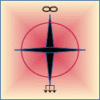Expanding Awareness and Understanding
Introduction: Sensing the Environment
The ability to perceive the environment is fundamental to life and human advancement. From the basic sensory responses of single-celled organisms to the advanced AI-powered sensors of the Digital Age, the evolution of sensory capabilities has shaped survival, culture, and technological progress. This chapter explores the historical development of sensory awareness, tracing its transformation across eras.
Single Cell Era: The Origins of Sensory Response
The sensory journey begins with single-celled organisms:
Basic Sensory Response: Early lifeforms responded to environmental stimuli such as light, temperature, and chemical gradients.
Adaptation for Survival: These rudimentary sensory mechanisms allowed organisms to locate nutrients, avoid threats, and adapt to changing conditions.
This era marked the foundation of sensory evolution, where life began to interact with its surroundings to survive.
Primitive Era: Developing Sensory Awareness
During the primitive era, sensory capabilities evolved significantly:
Primitive Sensory Awareness: Multicellular organisms and early humans refined their senses of vision, smell, touch, hearing, and taste
Environmental Interaction: Enhanced sensory abilities enabled hunting, foraging, and responding to predators.
This era established the sensory foundation for survival and environmental interaction.
Awareness Era: Enhanced Recognition
In the awareness era, sensory perception reached new heights:
Pattern Recognition: Humans began associating sensory input with patterns, leading to an enriched understanding of their environment.
Symbolic Expression: Early forms of symbolic art and carvings allowed sensory experiences to be communicated and preserved
These advancements expanded the scope of sensory awareness beyond immediate survival.
Medieval Era: Sensory and Cultural Expression
The medieval period intertwined sensory perception with culture:
Art and Literature: The flourishing of artistic and literary expression enhanced sensory experiences through color, form, music, and narrative.
Astronomy and Exploration: The development of observational tools and methods expanded sensory exploration to the stars and natural phenomena.
Sensory advancements enriched human creativity and understanding of the universe.
Agricultural Age: Observing the Heavens
The agricultural age leveraged sensory observation for societal organization:
Celestial Patterns: Farmers closely observed the movement of stars, sun, and moon to develop calendars and predict seasons.
Impact on Agriculture: These observations improved farming practices, ensuring consistent food production.
Sensory awareness became a vital tool for managing natural cycles and resources.
Enlightenment Era: Scientific Exploration
The Enlightenment era expanded sensory capabilities with groundbreaking innovations:
Telescopes and Microscopes: These instruments extended human perception to the cosmos and microscopic worlds.
Data Recording: Sensory observations were systematically recorded, laying the foundation for empirical science.
The era marked the transition from sensory experience to sensory analysis.
Industrial Age: Electrification of the Senses
The Industrial Age revolutionized sensory technologies:
Electric Sensors: Devices capable of measuring light, temperature, and pressure expanded sensory accuracy and reach.
Analog Filters: Early signal processing techniques allowed refined interpretation of sensory inputs.
These innovations bridged the gap between natural and artificial sensory systems.
Digital Age: The Rise of Intelligent Sensors
The Digital Age brought unprecedented advancements in sensory technology:
Optical and Wireless Sensors: Devices capable of real-time data collection enabled breakthroughs in automation and connectivity.
Digital Filters: Microprocessors processes vast sensory data with unmatched precision, driving applications like autonomous vehicles and smart systems.
This era represents the pinnacle of sensory evolution, integrating natural and digital perceptions.
